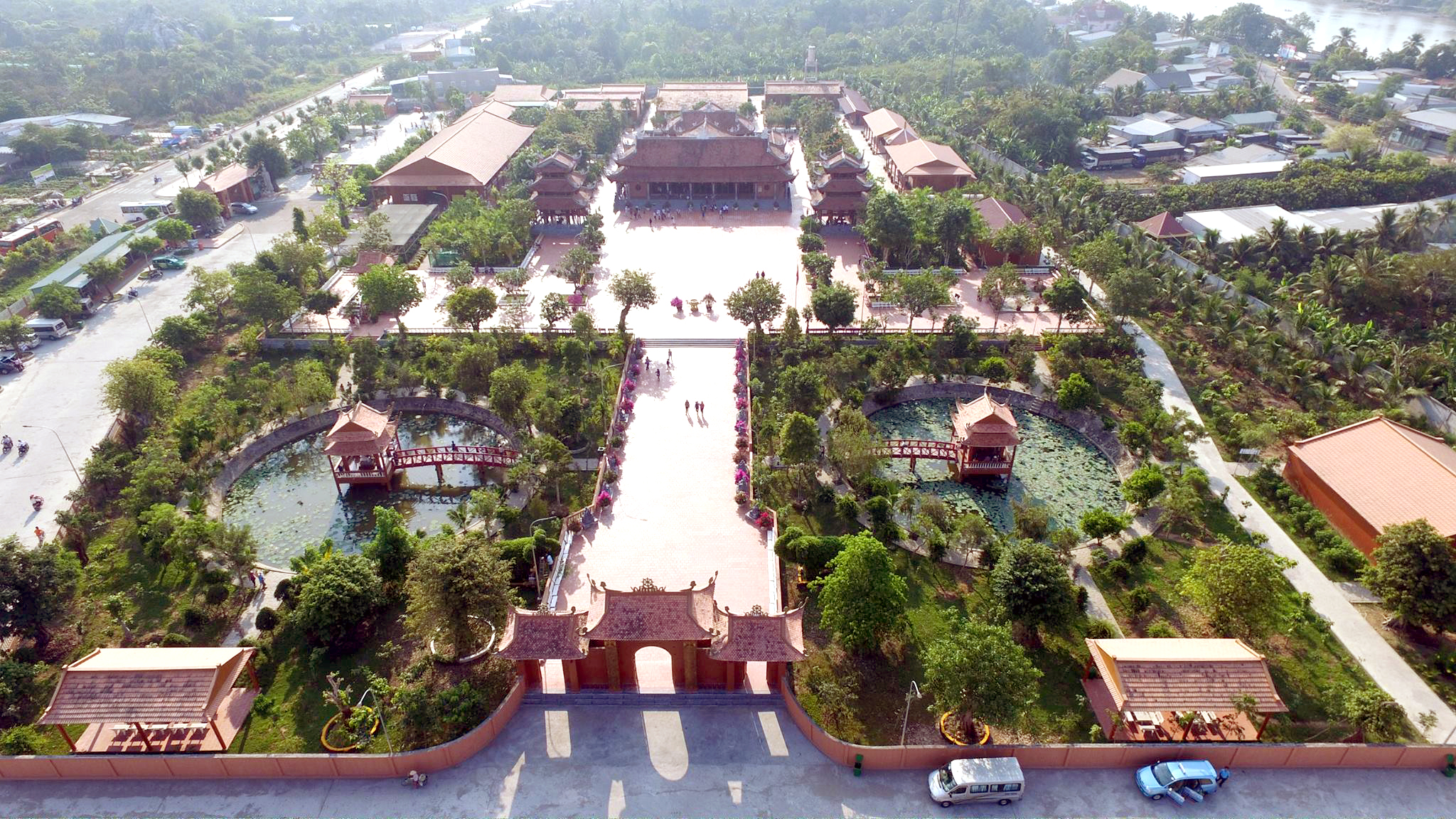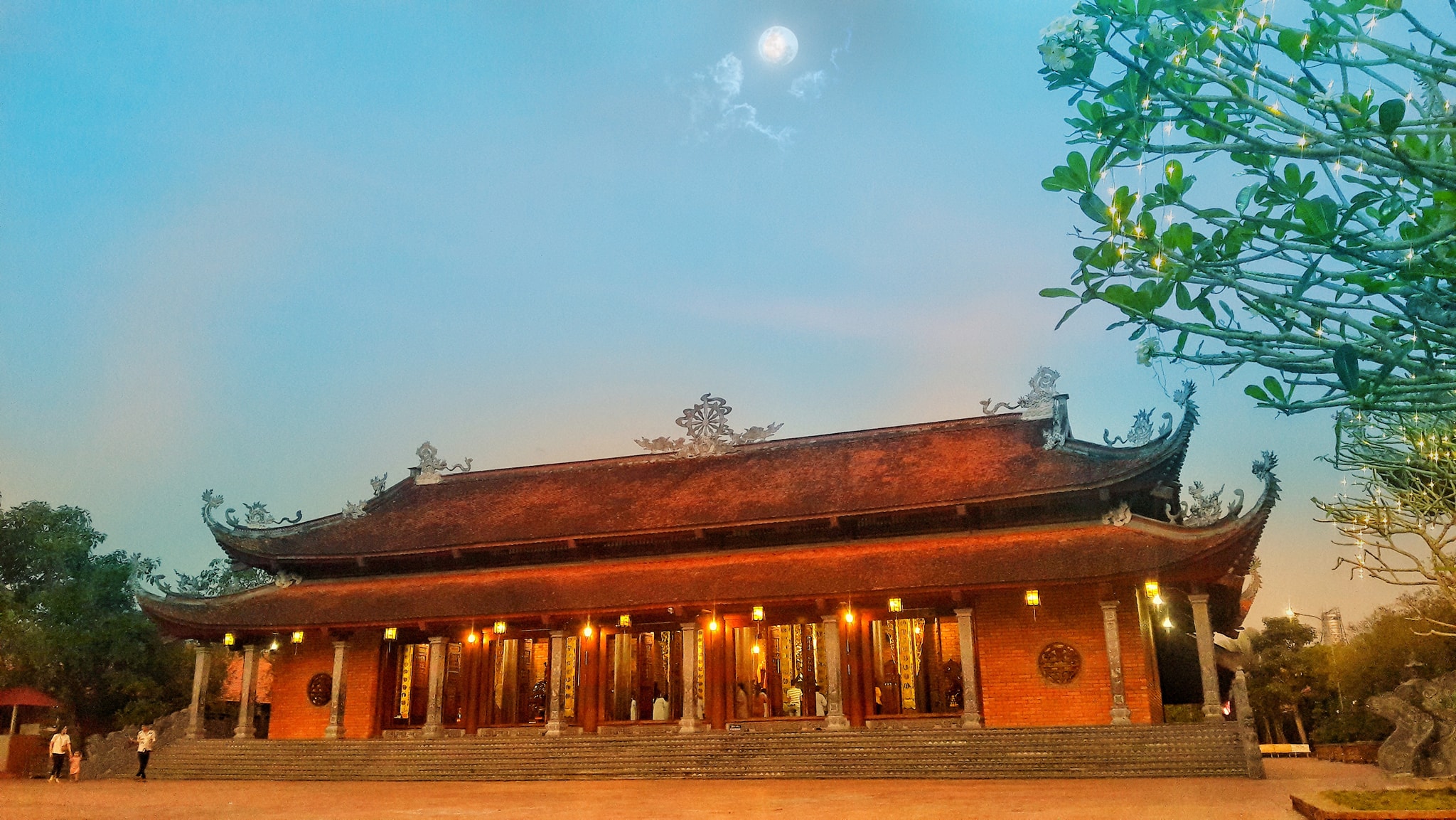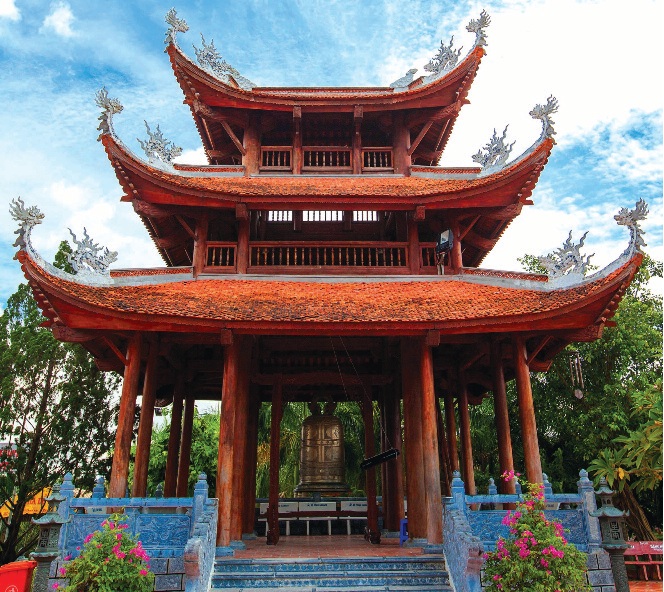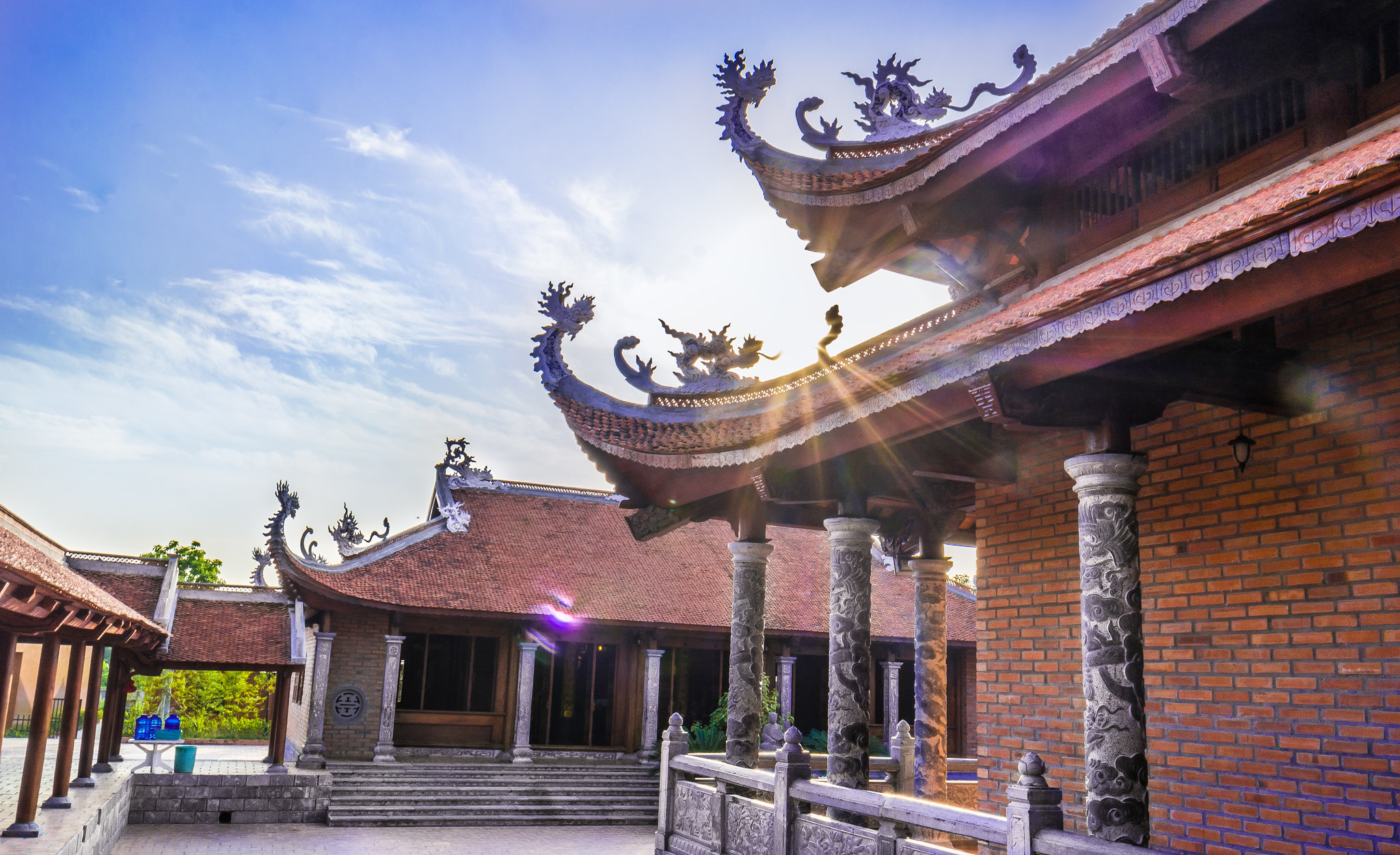Can Tho brings a very unique feature of the river region, coming here people seem to be returning to the most peaceful and simple things. For those who want to find a pure spiritual place, when traveling to Can Tho, remember to visit Truc Lam Phuong Nam Zen Monastery.
Panoramic view of the Zen Monastery from above
Phuong Nam Truc Lam Zen Monastery is located in Nhon My Hamlet, My Khanh Commune, Phong Dien District, about 15 km from the center of Can Tho City. After admiring the monastery, you can combine visiting the nearby My Khanh Tourist Village, which is only about 1km away.
Triple gate
Phuong Nam Truc Lam Zen Monastery was built in July 2013 and officially inaugurated on May 17, 2014, is one of the largest Buddhist works in the Southwest with a total area of up to 38,016 square meters. .
Truc Lam Phuong Nam Zen Monastery in Can Tho
Zen Monastery follows the Truc Lam Yen Tu sect of Buddha Emperor Tran Nhan Tong – the king who led the people to fight against the Mongol – Nguyen invaders. When the country was at peace, the king ceded the throne to his son and went alone to Yen Tu mountain to meditate, founding the Truc Lam Yen Tu Zen sect.
Bearing the pure Vietnamese architectural style of the Ly – Tran dynasties.
Because it is a temple of the Truc Lam Yen Tu sect, most of the items are bold in the pure Vietnamese architectural style of the Ly – Tran dynasties. This is a very clear feature in the construction architecture of Zen Monasteries in Vietnam. And this is also an important factor for anyone who looks at it to distinguish it from the architectural style of the Khmer Nam Tong or Bac Tong temples in the Southwest region.
The general shade is red-brown tile with large wooden pillars
To visit Truc Lam Phuong Nam Can Tho Zen Monastery, take a look around from the outside to the inside, the first highlight of the temple is a very large area with many large items such as the three-way gate, the main hall, the bell tower. , drum tower, post hall, … all share a common shade of red-brown tile with large wooden pillars and the base is made of solid stone.
The high and wide gate is built in the way of a curved attic, roofed with red tiles. In the middle of the gate is a wooden sign engraved with gilded braille “Southern Truc Lam Zen Monastery”; Below the signboards on both sides of the gate are two statues of Vi Da Ho Phap (Mr. Thien) on the left and a statue of Tieu Dien Dai Si (Mr. Evil) on the right. In general, the three entrances to the monastery are very eye-catching at first glance when exuding a majestic, modern but very traditional image.
Through the entrance gate is a spacious bright red brick courtyard leading to the main hall, visitors will see 2 rows of marble statues of Arhats placed in parallel. At the foot of each statue are engraved the names of heroes who have defended and built the country.
Large yard paved with bright red bricks
To the right of the main courtyard is a tall, curved roof bell tower modeled after the bell tower architecture at Keo Pagoda (Thai Binh), inside there is a large red bell (bronze bell) weighing 1.5 tons. On the left side of the yard is a drum tower with a wooden drum set which is elaborately carved, sophisticated and highly artistic. All of the above items are made from about 1,000 ironwood blocks imported directly from South Africa.
Bell tower
Drum Tower
The main hall has eight roof tiles in the style of the Tran dynasty. The power nest has four roofs in the style of the Ly Dynasty. The roof of the pagoda is a typical architectural form that simulates the agricultural life of the Vietnamese people. The roof of the pagoda is curved in the shape of a boat’s bow to cope with the wind and waves. It narrows from above, and spreads out from the bottom to create a solid position, also known as “upper-thus-low-challenge”.
The roof of the pagoda is curved in the shape of a boat’s bow to cope with the waves
The more inside, visitors will feel the fresh air along with the faint smell of burning incense, mixed with incense smoke to create the ancient and sacred.
Presbytery
Stepping into the main hall (also known as Dai Hung Buu Dien) you will be overwhelmed by the giant statues, the space is extremely quiet but full of majesty. Particularly, the statue of Shakyamuni Buddha worshiped in the main hall is made of bronze, weighs 3.5 tons and the great red statue weighs 1.5 tons. Statues of Bodhisattvas and ancestors carved from Du Sam wood have a lifespan of 800 years. Red brick floor, all 44 wooden columns are solemnly placed on the canopy of gray stone with clouds, carved with stylized lotus shape.
Inside the shrine room
Along the two corridors, there are also many statues of arhats carved in marble, each statue as a unique architectural art piece. The worshiping statues are created by the hands of famous artisans in the profession, each statue exudes its own charisma. Admiring these masterpieces, viewers cannot help but admire the talented hands of the artists. Looking at it, we can feel the meticulousness and meticulousness in detailing the soul of each Buddha.
Statues of arhats carved out of marble
In addition, on the grounds of the Zen Monastery, there are other items such as: Quan Am Temple, Maitreya Palace (Thuy Ta) Temple, One Pillar Pagoda, lecture halls, halls of worship, halls, library, Oriental medicine room, etc. The works are arranged in harmony with green trees, creating a quiet scene, bringing a sense of relaxation for those who want to walk around.
The space brings a sense of relaxation to visitors
On the right is a water house located on a round lake with undulating ripples, with water lilies blooming brightly in the sun. Leading to the water house is a red painted bridge, inside there is a precious wooden statue of Maitreya Buddha (brown), with a carefree face. The left side is also a water house, with the same architecture, only the white stone statue of Guan Yin Buddha (2 meters high) is solemnly placed inside with a tolerant and holy face like illuminating all the sufferings of sentient beings and ready to “compassionately” save.
Guanyin power
Model of One Pillar Pagoda
Truc Lam Phuong Nam Zen Monastery is considered one of the most unique works of art in Tay Do. Visiting Truc Lam Phuong Nam Zen Monastery is to return to the space of stillness, the soul is cleansed of all dust of the world. Here you will learn about the simplest living philosophies from Buddhism that are extremely profound. Entering the monastery feels like stepping into another world, where everything in the hustle and bustle doesn’t exist, only pure hearts turn to Buddha’s door. Walking around the lotus pond, finding a quiet place to relax, burning incense to wish good luck, is so interesting.
Source: Collected internet.














